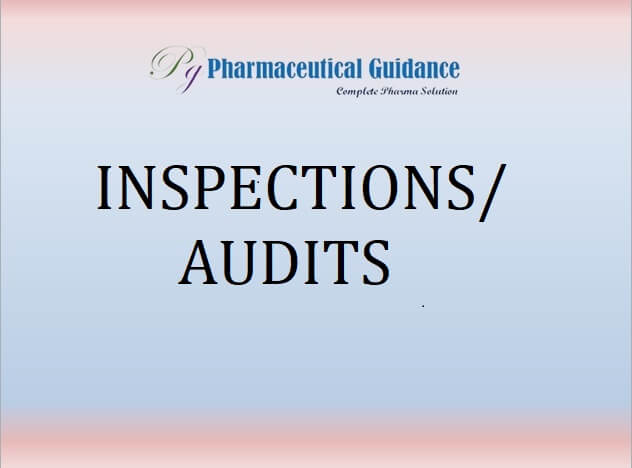INSPECTIONS/AUDITS
1. Manufacturing Process
i. Drug Product (Dosage Form)
In many cases, clinical production or trial runs of a new drug are produced in facilities other than the ones used for
full-scale production. The facilities and controls used for the manufacture of the batch or batches are audited.
For a generic drug product, the biobatch or biobatches are required to be manufactured in production facilities, using production equipment, by production personnel, and the facility is to be in conformance with cGMPs. Accurate
documentation is essential so that the production process can be defined and related to the batch or batches used for
the early clinical, bioavailability, or bioequivalence studies of a new drug or generic drug product.
Generic product bio-batches are ANDA batches that are compared to the originator/reference product to establish their equivalence.
NDA bio-batches are NDA batches comparing the product planned for marketing with that studied during clinical trials to establish their equivalence.
The batch records submitted in the application must be audited as part of the inspection to ensure that the proposed production process is the process that was used for the manufacture of the bio/stability batches.
Some manufacturers have historically made small batches that were used for biostudies and stability studies and misrepresented them as larger batches in submissions.
Documentation sometimes has included research and development notebooks or batch records. Inventory records or
receiving records of drug substances has been found to be of value in documenting the accountability of drug substances used in the early batches.
ii. Drug Substance (Bulk Drug Chemical)
The Guide to Inspection of Bulk Pharmaceutical Chemical Manufacturing (http://www.fda.gov/ora/inspect—ref/orgs/bulk.htm) and Compliance Program 7356.002F(http://www.fda.gov/cder/dmpq/compliance—guide.htm)
covering Bulk Pharmaceutical Chemicals provide details of inspections covering bulk drug chemical manufacturing
processes.
2. Reprocessing
The GMP regulations require reprocessing procedures to be written, and it is customary but not required that
NDAs/ANDAs contain procedures covering foreseeable deviations from physical specifications (e.g., color, capped
tablets, deviations from hardness specifications, etc.). If the NDA/ANDA contains a reprocess provision, the applicant must produce scientific data to establish that the procedure will result in a product that is equivalent to the original product.
3. Laboratory
Laboratory equipment and procedures must be qualified and validated. Every NDA/ANDA inspection will include
both an evaluation of laboratory controls and procedures and an audit of some of the raw data used to generate
results. These data may be located in research and development test logs. The authenticity and accuracy of data
used in the development of a test method should be established. (See the Guide to Inspection of Pharmaceutical
Quality Control Laboratories, July 1993.)
4. Components
The supplier and source of the active drug substance used in the manufacturing of the bio-batch or clinical batch should be identified. When the manufacturer changes suppliers of drug substance from that supplier used for the
manufacture of the bio-batch or clinical batches, then the application should include data demonstrating that the
dosage forms produced from the drug substances from the two different suppliers are equivalent in terms of conformance with established specifications, including those stated in the application. The data used to determine the adequacy of the physical specifications established for the subsequent suppliers or suppliers of the drug substance should be established.
5. Building and Facilities
The addition of any new drug to a production environment must be carefully evaluated as to its effect on other products already under production and as to changes that will be necessary to make to the building and facility. Construction of new walls, installation of new equipment, and other significant changes must be evaluated for their effect on the overall compliance with GMP requirements.
For example, new products, such as cephalosporins, would require that the firm demonstrates through appropriate separation and controls that cross-contamination can not occur with regard to other products being made in the
same facility. In addition, facilities that may already be operating at full capacity may not have adequate space for
additional products.
6. Equipment
New products, particularly potent drug products, can present cleaning problems in existing equipment. Manufacturers must validate their cleaning processes for the new drug/dosage form.
7. Packaging and Labeling Controls
Packaging and labeling control procedures must be adequately written. Poor label control and accountability for
other products may have an adverse effect on the firm’s ability to ensure that the new drug will always be properly labeled. The label and packaging controls should take into account considerations of past label mix-ups and recalls.


